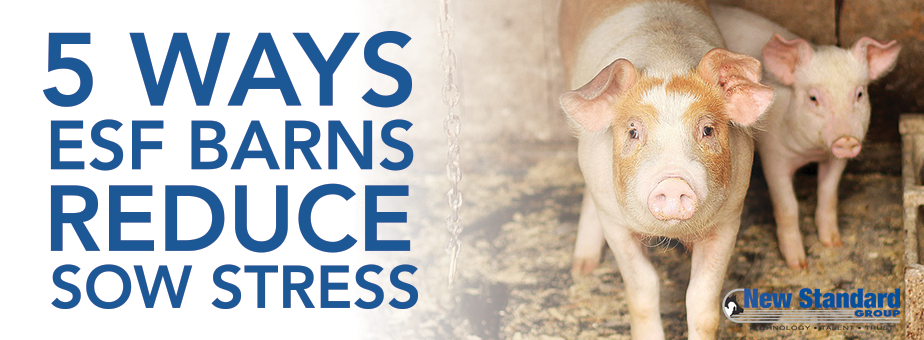Putting together a pig barn design is a long and detailed process for you as a producer. You have to weigh your different housing options and how each will affect your production. If you decide to build a barn with Electronic Sow Feeding equipment, it is important to know how the design of your system will affect your animals, your barn staff, and your everyday operations. Proper ESF design will improve efficiency and production while a poor pig barn design will result in a disastrous investment.
I am a graduate student at Kansas State University studying swine nutrition, and I was given the opportunity to conduct research on a sow farm containing NEDAP electronic sow feeders for group gestation pens. Conducting research involving gestating sows can be a daunting task, however with all of the advancements in technology, specifically the use of ESFs, doors are being opened into areas of gestating sow research that have never been explored before.
Group sow housing barns are not new to the industry, but people are often not sure what it is like inside one of these hog barns. Most of us are familiar with gestation stall barns from either working in one or seeing images of them online and throughout different media. While there are many gestation stall sow housing facilities in North America, the industry is transitioning to loose housing facilities. Get a first hand account of operations inside these facilities by listening to what Janae Metzger from Pig Hill Farms has to say about working in an ESF barn.
Feed costs add up in sow housing, and they quickly take away from your bottom line. Luckily feeding technology has evolved in many ways over the past decade, making it easier to control these costs. By accurately targeting the amount of feed each sow receives, we can also improve her health throughout her life in the barn. Implementing Electronic Sow Feeding is the first step to start controlling feed, but Nedap has also introduced farrowing feeding systems to take it one step further. Automated feeding in your farrowing barn will help you reduce feed waste, keep sows healthy throughout their entire lives, and produce healthier, heavier piglets.
Due to both consumer pressures and the need for improved barn efficiency and reduced feed costs, pork producers in North America are moving towards Electronic Sow Feeding in hog barns. Nedap's automated sow feeding technology has been around since the early 1980s and has since developed into a complete sow management system. Learn more about the evolution of ESF technology from dysfunctional identification collars to fully automated barn management systems.
It is an uncomfortable question to ask yourself, but do you know if your swine barn is designed to keep up with the pork industry trends in the next 20 years? There is no doubt that the industry has been changing rapidly over the past 20 years, and the next 20 years will likely keep the same pace. As a pork producer it is vital to stay up-to-date with the latest trends, especially in sow housing. Hog barn designs from 20 years ago are quickly becoming outdated, and it is time to start considering what you can do so the rest of the pork industry doesn't leave you behind.
5 Ways ESF Barns Reduce Sow Stress
02.22.2017
Converting to an Electronic Sow Feeding barn usually brings about many different thoughts and emotions. You may be excited for the change, frustrated about the social demands and regulations, or you may just know it is a necessary change. Whether you are frustrated, excited, or indifferent, you probably have the end goal of increasing production within your barn. One of the major benefits of ESF barns is their ability, with proper management, to reduce stress among your sows. By reducing stress, the pigs become happier and healthier. When the pigs are happy and healthy, they produce more piglets and increase your profits. Learn more about how Electronic Sow Feeding barns will reduce your sows' stress.
Even in the best-managed barns, one out of three sows is either over or under her ideal farrowing weight which of course affects her litter size and viability. These less productive sows cost the industry almost $30,000 for a group of 1,000 sows. The task before every pork producer is how to get their farrowing rates up and their costs down. The best way to do this is by incorporating state of the art sow weight monitoring into your electronic sow feeding systems.
The success of your ESF barn, upon startup and during regular operation, depends on a few key factors. One of the most important of these is how you train the gilts that are coming into the system, and more specifically, how you prepare the gilts overall. In this article, we will walk you through the process of preparing, training and acclimating gilts, from weaning through training and further on into breeding. Depending on the flow of animals into your loose sow housing facility, you can incorporate the following four rules at any point in the life of the gilt.


















